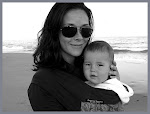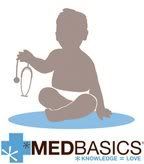** home ** shopping ** playground ** travel **





Home
1. Child proofing
- Regularly conduct a complete safety walk-through of your home. Approach each room from the level of your child. Consider age & developmental milestones. What can you get into? What pretty shiny things do you see? Are cabinets unlocked? Cords dangling? Outlets exposed? What can you reach / pull over? What's in the trash can... razors, cleaning solutions, batteries? After completing the walk-through, make the necessary adjustments to your baby's environment.
- If you must keep a firearm in the house, keep it unloaded and locked in a case. Lock ammunition in a separate location. If your child plays in other homes, ask if guns are present there, and if so, how they are stored.
2. SIDS: Sudden infant death syndrome (SIDS)
Because as many as 90% of SIDS deaths are caused by unsafe sleep practices, it is important that you and everyone who cares for your baby consistently follow SIDS prevention guidelines.
- Make sure everyone putting your baby to sleep knows to place him on his back, not his belly or even his side. Everyone, every time.
- Your baby's crib should be safety approved with a firm mattress and fitted sheet.
- Remove bumpers, blankets, pillows and toys from the crib.
- Babies should sleep in a crib separate from siblings and parents.
- Don’t over dress your baby. Use a sleep-sack instead of blankets.
- Offer a pacifier at nap time and bedtime throughout the first year of life.
- Provide daily tummy time which helps strengthen neck muscles.
- For more information on SIDS, visit Firstcandle.org
- Tighten all the screws, bolts, and other hardware securely to prevent the crib from collapsing.
- Strangle risks- Never hang anything with strings or ribbon over cribs and make sure the crib has no raised corner posts or cutouts.
- The slats on the crib should be no more than 2-3/8 inches apart to ensure baby's head doesn't get caught in between.
- Use a mattress that fits snugly in the crib so your baby cannot slip in between the sides of the crib.
- Install smoke alarms outside every bedroom and on every level of your home, including the basement. Buy alarms with long-life lithium batteries. Standard batteries should be changed every year. Test alarms every month to make sure they are working properly.
Shopping
The American Academy of Pediatrics (AAP) recommends that parents & caregivers follow these guidelines when shopping with children.
- Never place an infant carrier on top of the shopping cart.
- Never allow a child to ride in the basket.
- Never allow a child to ride on the outside of a cart.
- Never allow an older child to climb on the cart or push the cart with another child inside.
That's a lot of nevers! Over cautious? It seems not. Most shopping injuries occur when a child falls from a shopping cart, the cart tips over, the child becomes entrapped in the cart, or the child falls while riding on the outside of the cart, according to the policy statement, "Shopping Cart-Related Injuries to Children." Each year, children are seen in the Emergency Room with shopping cart- related injuries. Head and neck injuries account for 74 percent of shopping cart-related injuries among children younger than 15.
To avoid injury on your next shopping trip, try the following alternatives:
- Get another adult to come with you to watch the children while shopping.
- Put children in strollers, wagons, or frontpacks instead of in shopping carts.
- Ask older children to walk and praise them for behaving and staying nearby.
- Leave children at home with another adult.
- Shop online if local stores offer shopping on the Internet.
Playground
You've heard it, "it's all fun & games 'til somebody gets an eye poked out... 'til somebody gets a bloody nose... 'til somebody cracks their head open...
You can help keep the fun & games going for your kiddo's just by checking a few key things.
- Is the equipment the right size for your child?
- Can children reach any moving parts that might pinch or trap any body part?
- What's underneath the equipment? The best way to prevent serious injuries is to have a surface that will absorb impact when children land on it. This is especially needed under and around swings, slides, and climbing equipment.
- Is wooden play equipment free of splinters and nails or screws that stick out?
- Is the slide hot? Metal slides can get very hot from the sun and burn a child's hands and legs.
- Are there rocks, glass, sticks, toys, debris, or other children at the base of a slide?
- Are there other children swinging? Use caution in swing areas to prevent collisions.
Travel
Many Fellows of the American Academy of Pediatrics (FAAPs) are happy to see children who are traveling to their city. Here's a great link!
Finding a Pediatrician When Traveling- http://tinyurl.com/2g2h4fm
For more travel tips see our August blog post, Vacation Emergency Survival Guide.
1. Airplane
- Supervision in a busy airport is a must, especially for the newly mobile little one.
- When traveling by plane, place baby in a car seat or hold tightly in your lap during turbulance.
- Avoid hot drinks on the plane such as tea & coffee which could burn your baby if spilled.
- Watch baby's head! This unfortunately is a personal addition to the list after a trip to Missouri in August with sweet Vivienne. I totally hit her head on the overhead compartment when standing to exit... uggh, Mommy's sorry!
2. Car
- Read about the specific features, how to install & use your particular car safety seat.
- Check straps / harnesses with each car ride to ensure your little one is securely restrained.
- Don't give your child snacks while she's in her car seat.
- Remember to take your child with you when you get out of the car. I know it sounds obvious but every year children die from hyperthermia after being left in their car seat in the car.
- See the AAP guide below:
| Age Group | Type of seat | General Guidelines |
|
Infants |
Infant seats and rear-facing convertible seats |
Infants should ride rear-facing until they reach the highest weight or height allowed by their car safety seat’s manufacturer. At a minimum, children should ride rear-facing until they have reached at least 1 year of age and weigh at least 20 pounds. When children reach the highest weight or length allowed by the manufacturer of their infant-only seat, they should continue to ride rear-facing in a convertible seat.
|
|
Toddlers/preschoolers |
Convertible seats and forward-facing seats with harnesses |
It is best for children to ride rear-facing as long as possible to the highest weight and height allowed by the manufacturer of their convertible seat. When they have outgrown the seat rear-facing, they should use a forward-facing seat with a full harness as long as they fit.
|





















